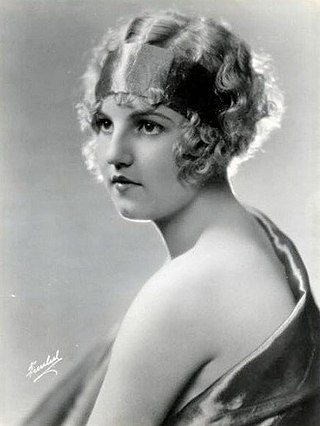
George Brackett Seitz was an American playwright, screenwriter, film actor and director. He was known for his screenplays for action serials, such as The Perils of Pauline (1914) and The Exploits of Elaine (1914).

George S. Barnes, A.S.C. was an American cinematographer active from the era of silent films to the early 1950s.

William H. Daniels ASC was a film cinematographer who was Greta Garbo's personal lensman, serving as the cinematographer for such Garbo-starring films as Torrent (1926), The Mysterious Lady (1928), The Kiss (1929), Anna Christie, Romance, Grand Hotel (1932), Anna Karenina (1935), and Camille (1936). Early in his career he worked regularly with director Erich von Stroheim, providing cinematography for such films as The Devil's Pass Key (1920) and Greed (1924). Daniels went on to win an Academy Award for Best Cinematography for his work on The Naked City (1948).

Arthur Charles Miller, A.S.C. was an American cinematographer. He was nominated for the Oscar for Best Cinematography six times, winning three times: for How Green Was My Valley in 1941, The Song of Bernadette in 1944, and Anna and the King of Siam in 1947.

Johnny Arthur was an American stage and motion picture actor.

William Reeves Eason, known as B. Reeves Eason, was an American film director, actor and screenwriter. His directorial output was limited mainly to low-budget westerns and action pictures, but it was as a second-unit director and action specialist that he was best known. He was famous for staging spectacular battle scenes in war films and action scenes in large-budget westerns, but he acquired the nickname "Breezy" for his "breezy" attitude towards safety while staging his sequences—during the famous cavalry charge at the end of Charge of the Light Brigade (1936), so many horses were killed or injured so severely that they had to be euthanized that both the public and Hollywood itself were outraged, resulting in the selection of the American Humane Society by the beleaguered studios to provide representatives on the sets of all films using animals to ensure their safety.

Ena Jessie Gregory, also known as Marian Douglas, was an Australian-American actress who achieved fame in Hollywood in the 1920s.

Lafayette S. "Lafe" McKee was an American actor who appeared in more than 400 films from 1912 to 1948.

Theodore von Eltz was an American film actor, appearing in more than 200 films between 1915 and 1957. He was the father of actress Lori March.

Leonard Miles "Bud" Osborne was an American film actor. He appeared in more than 600 films and television programs between 1912 and 1963.

Wade Boteler was an American film actor and writer. He appeared in more than 430 films between 1919 and 1943.

Samuel Bischoff was an American film producer who was responsible for more than 400 full-length films, two-reel comedies, and serials between 1922 and 1964.

John Miljan was an American actor. He appeared in more than 200 films between 1924 and 1958.

George Henry Irving was an American film actor and director.
William Hamilton was an American film editor whose career spanned three decades. His credits include Cimarron (1931), Morning Glory (1933), The Gay Divorcee (1934), Roberta (1935), Top Hat (1935), Stage Door (1937), The Hunchback of Notre Dame (1939) and Suspicion (1941).

Anton Pointner was an Austrian stage and film actor. Pointner's career began on the stages of Austria and performed in both silent and sound films in his native Austria, as well as in Germany and the United States.
Harry C. Neumann of Chicago, Illinois, was a Hollywood cinematographer whose career spanned over forty years, including work on some 350 productions in a wide variety of genres, with much of his work being in Westerns, and gangster films.
L. William O'Connell was an American cinematographer who worked in Hollywood between 1918 and 1950. He frequently worked with directors Howard Hawks and William K. Howard.

Harry Fischbeck (1879–1968) was a German-born cinematographer who emigrated to the United States where he worked in the American film industry. He was employed by a variety of different studios during his career including Universal, United Artists and Warner Brothers, but primarily for Paramount Pictures. One of his first credits was for the historical The Lincoln Cycle films directed by John M. Stahl.
















